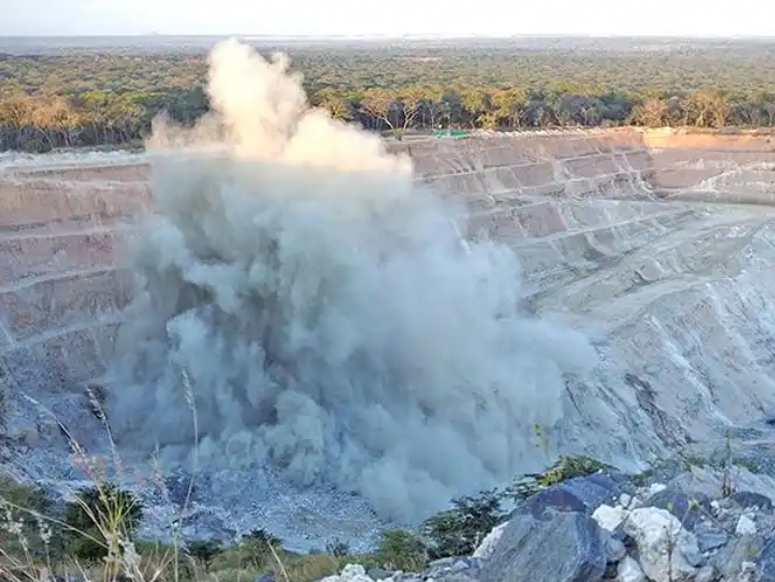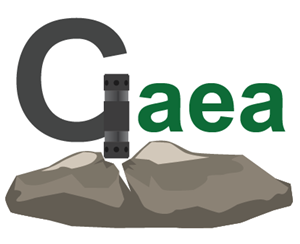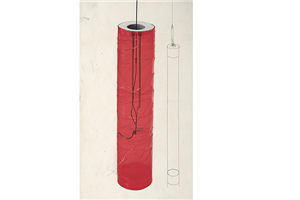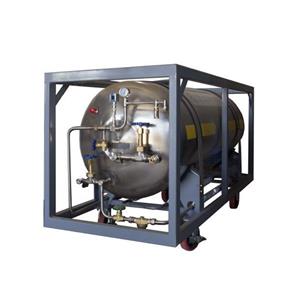High quality explosive substitute, O2 rock blasting system and CO2 rock blasting system
In projects where the use of civilian explosives is prohibited, liquid oxygen explosion, expander (static crusher) and carbon dioxide (CO₂) rock blasting are commonly used alternative technologies. The following is a detailed explanation of the principles, operating procedures, technical indicators and safety control, combined with actual engineering application scenarios and technical specifications.

1. Liquid oxygen rock blasting technology
1. Principle and applicable scenarios: Liquid oxygen rock blasting is based on the characteristics of rapid oxidation and heat release after liquid oxygen (-183℃) is mixed with combustibles (such as carbon powder, wood chips, cotton yarn). When the mixture is ignited by a detonator or an electric ignition device, the liquid oxygen instantly vaporizes and expands (the volume expands by about 860 times), generating a high-pressure shock wave to crush the rock mass.
Applicable scenarios: hard rock crushing, mining (especially suitable for high-gas mines, because liquid oxygen itself is non-flammable and has a higher safety).
2. Operation process
1. Drilling design: hole diameter: 40–60 mm, hole depth is 80%–90% of rock thickness.
Hole spacing and row spacing: adjusted according to rock hardness, generally hole spacing is 0.8–1.2 m, row spacing is 0.6–1.0 m.
2. Explosive bag preparation: put combustibles (such as carbon powder) into anti-static cloth bags, soak them in liquid oxygen according to the mass ratio of liquid oxygen to combustibles 1:2–1:3, and the filling must be completed within 5–10 minutes* (liquid oxygen is easy to volatilize and cause failure).
3. Explosive loading and detonation: after the explosive bag is inserted into the borehole, it is sealed to the hole mouth with yellow mud, and the delay time after the detonator is ignited is controlled at 20–30 ms.
4. Technical indicators
Oxygen balance: it is necessary to ensure that the combustibles and liquid oxygen react fully to avoid the accumulation of residual oxygen (the oxygen balance value should be close to 0).Detonation velocity: about 200–300 m/s, lower than that of explosives (such as TNT detonation velocity 6900 m/s), and energy needs to be compensated by densely distributed holes.Safety threshold: The oxygen concentration in the working area needs to be lower than 23% (normal atmosphere is 21%) to prevent fire caused by oxygen-rich environment.
5. Safety risks
Volatile leakage: Liquid oxygen leakage may cause local oxygen concentration to exceed the standard, and a real-time oxygen concentration monitor needs to be configured.Static sensitivity: All tools need to be treated with anti-static treatment, and operators need to wear anti-static clothing. 2. Expanding agent (static crushing agent) technology
1. Principle and applicable scenarios The expander is mainly composed of calcium oxide (CaO), which reacts with water to form calcium hydroxide and releases heat (reaction formula: CaO + H₂O → Ca(OH)₂ + 65 kJ/mol), expands 3–4 times in volume, generates 30–50 MPa expansion pressure, and slowly cracks the rock mass. Applicable scenarios: urban building demolition, cultural relics protection projects, and static crushing of concrete structures. 2. Operation process
1. Drilling parameters: hole diameter: 38–42 mm, hole depth is 80% of the component thickness.
Hole spacing: 8–10 times the hole diameter (e.g. 40 mm hole diameter, hole spacing 320–400 mm).
2. Slurry preparation: water-cement ratio 0.28–0.33 (e.g. HSCA-Ⅲ type breaker requires 30–33% water), stir until uniform paste.
3. Hole filling and reaction: slurry is poured to 90% of the hole depth, and the hole mouth is sealed with a wet cloth to prevent water evaporation. Reaction time: 2–4 hours in summer, 6–8 hours in winter (reaction time is extended by 50% for every 10°C drop in temperature).
3. Technical indicators
Expansion pressure: 30–50 MPa (matching the cement compressive strength of 30–50 MPa).Reaction temperature rise: the slurry temperature can reach 80–100°C, which needs to be monitored to avoid burns. Environmental protection: pH value is 12–13, and slurry waste needs to be discharged after neutralization treatment.
4. Efficiency optimization
Pre-crack hole assistance: Drill guide holes between adjacent holes to guide the direction of crack expansion.Temperature control: Use 40℃ warm water to mix slurry in winter to shorten the reaction time.
III. CO₂ rock blasting technology
1. Principle and applicable scenarios Liquid CO₂ is stored in a high-pressure steel pipe (fracture pipe), and gasification is triggered by electric heating (liquid→gas volume expands 600 times). When the pressure rises to 300–400 MPa, it breaks through the constant pressure rupture disc, and the high-pressure gas is released through the energy release head to impact the rock mass.
Applicable scenarios: underground coal mine outburst prevention, tunnel smooth surface blasting, and precise crushing of dangerous rock mass.
2. Operation process
1. Fracturing pipe assembly: Fill liquid CO₂ to 80% of the pipe volume (to prevent overpressure explosion), and the filling pressure is 7–10 MPa.
2. Drilling and layout: hole diameter 90–110 mm, hole depth 2–5 m, the gap between the outer diameter of the fracturing pipe and the hole diameter ≤5 mm (fixed with rubber pads).
3. Detonation control: Start the heater, CO₂ gasifies and pressurizes to the set rupture pressure (such as 300 MPa) within 18–25 seconds.
4. Technical indicators
Energy output: A single tube of CO₂ (1.5 kg) releases about 1.5–2 MJ of energy, equivalent to 0.3–0.4 kg TNT.Peak pressure: The energy release can reach 200–300 MPa instantly, and the duration is 2–5 ms.Safety redundancy: The error of the constant pressure rupture disc is ±5%, and sampling and testing are required for each batch.
5. Safety specifications
Anti-flashback design: The fracturing pipe must pass the GB/T 29910-2013 impact test.Safety distance: The operator must be more than 15 m away from the fracturing pipe to prevent splashing and injury.

IV. Key points of engineering application
1. Environmental monitoring: Liquid oxygen explosion requires real-time monitoring of oxygen concentration, and CO₂ explosion requires detection of CO₂ concentration in the operation area (threshold ≤5000 ppm).
2. Customized design: For stratified rock mass, the hole spacing needs to be reduced by 20%–30%; concrete structures need to avoid steel bars when drilling holes.
3. Emergency plan: Start the nitrogen replacement system when liquid oxygen leaks, and activate the hydraulic pressure relief valve when the CO₂ fracture pipe is stuck.




